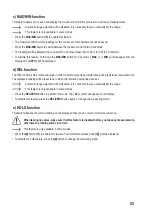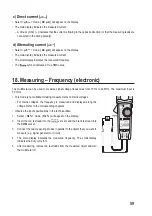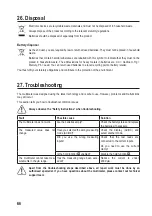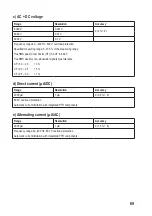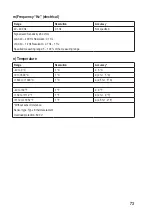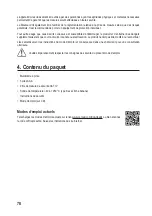
64
24. Testing – Motor direction (3-phase)
a) Introduction
You can use the multimeter to identify the direction of rotation in a 3-phase power supply. Only two test leads are
needed in this mode. The phase conductors (L1, L2 and L3) must be scanned one after another. The multimeter
detects the phase shift and indicates the direction of rotation (rotary field) with an arrow.
b) Special notes
• There may be signal interference when measuring 3-phase motors with a variable frequency drive.
• To minimize interference, extend the measuring duration to at least 30 seconds.
• The rated voltage may not be entirely accurate for motors with a variable frequency drive and should be used for
reference purposes only.
c) Testing procedure
1. Select <
> mode.
2. Press and hold the SELECT button until [ ] flashes on the display.
< Motor > mode is enabled.
- [ AC V Hz ] will appear on the display.
- Automatic range selection will be disabled and the 600 V range
will be selected.
- Note: If the meter is in < LPF > mode you cannot switch to
< Motor > mode.
3. A reading of approximately 0.0 V will appear on the display.
4. Insert the red test lead into the
socket and the black test lead
into the COM socket.
5. Connect the black test probe to the L1 phase conductor. This
connection should be kept in place for the entire test.
6. Connect the red test probe to the L2 phase conductor.
7. When two phase conductors are detected:
- The multimeter beeps and [ ] will stop flashing and stays constant.
- The main display indicates the measured voltage.
- The small display indicates the measured frequency.
8. Connect the red test probe to phase conductor L3 within 5 seconds.
- If the probe is not connected within 5 seconds, the multimeter will
stop taking measurements and you will need to start again.
9. The multimeter analyses the phase shift of the three phase conductors
and indicates the direction of rotation using two symbols:
-
= Clockwise = Right-pointing arrow
-
= Anticlockwise = Left-pointing arrow




